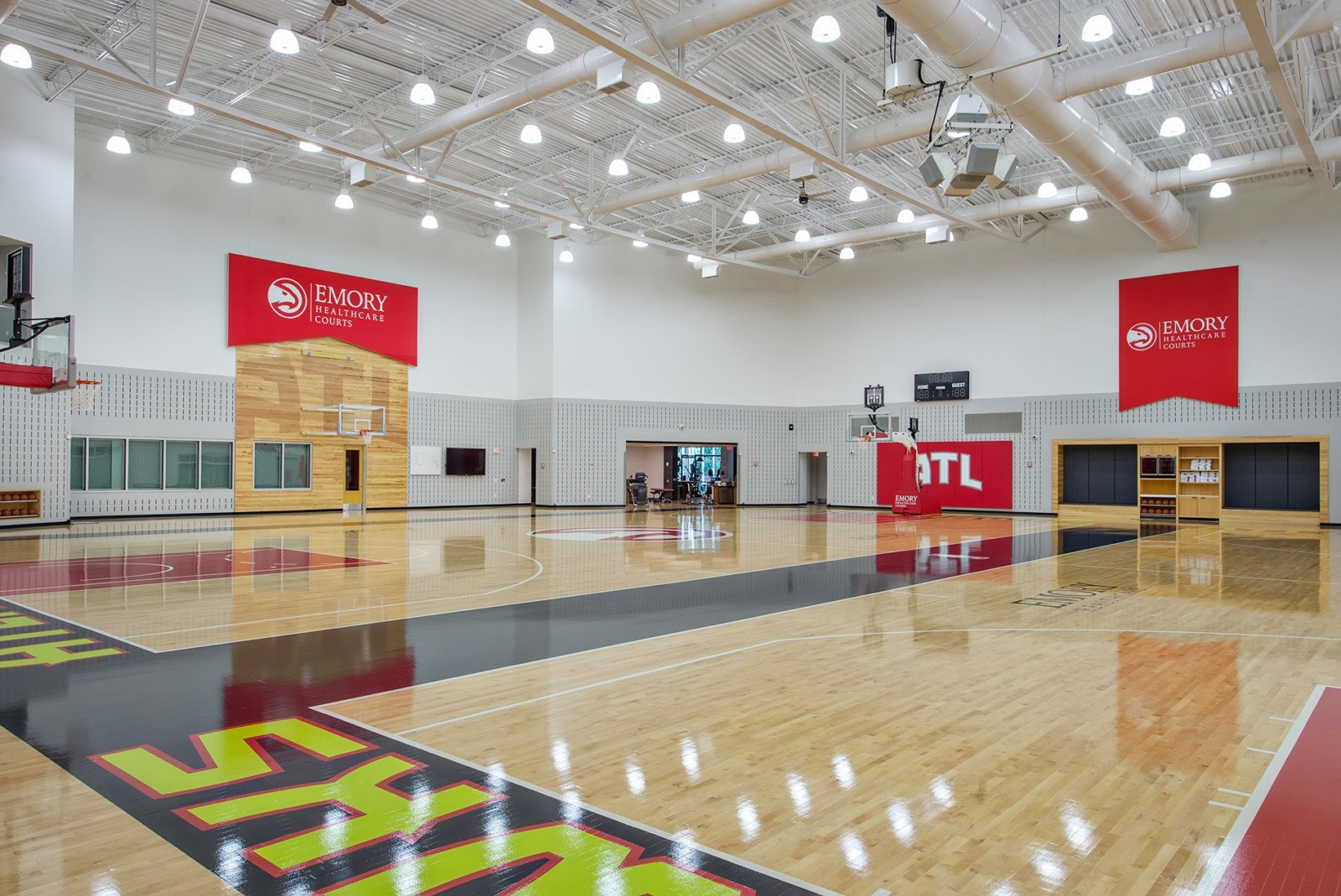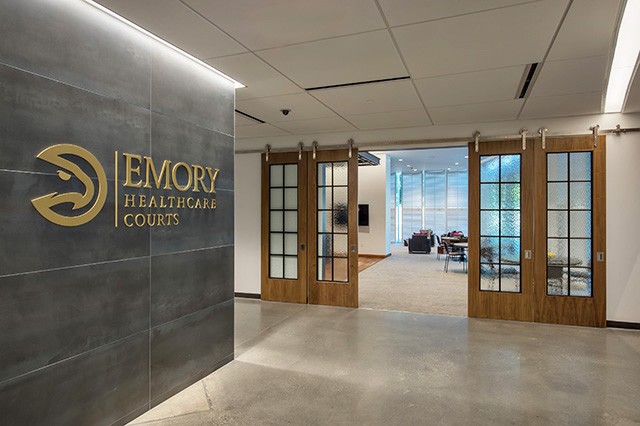HOK’s Randy Kray, director of Science + Technology, talked to Tradeline about the drivers behind new hybrid translational healthcare facilities.
A new type of hybrid facility that supports athletics, healthcare, teaching and research within a shared footprint is influencing academic facility design. Recent examples include the Emory Sports Medicine Complex (above) and the University of Notre Dame’s Campus Crossroads.
Excerpted from Tradeline:
An emerging new model for hybrid translational healthcare facilities combines scientific research with university and professional athletic programs to increase community engagement and student well-being. From integrating sports training facilities with medical clinics and applied research, to incorporating fitness gyms, running tracks and rock-climbing walls into student lounges and public spaces, the combination of athletics and recreation with other programs offers an innovative vision for academic facility design.
“We are in a transformational period in terms of how we are thinking about and programming spaces and the way we are getting funding for infrastructure,” said Randy Kray, director of Science + Technology for HOK. “With these new hybrid facilities, we are finding that it is no longer just about the undergraduate STEM teaching laboratories. It is no longer just about research space or classrooms. It’s about the whole student experience and the researcher and faculty experience. It is about the notion of designing better places for human performance. It is about getting more for our infrastructure buck and combining learning, research, science, application and commercialization to change the world.”A common theme with this new breed of hybrid facilities is that they are promoting a more integrated approach to campus life, with an emphasis on recreation, athletic activity, human performance and applied health science.

